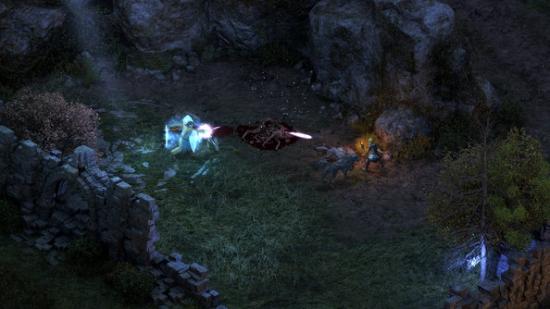Pillars of Eternity is a game out of time. More than a decade since the release of the last Infinity Engine game, Icewind Dale II, Obsidian’s Kickstarted RPG is simultaneously a step backwards and forwards. It’s like looking at a game from the 90s, if games in the 90s had been really, really, ridiculously good looking.
I’m not saying Pillars of Eternity is outdated. I’m saying I’ve been starved of sprawling, reactive RPGs for years. Obsidian are bringing them back to the table. At some point publishers decided I wanted more expensive cinematic and, as a result, linear stories. Pillars isn’t that.
It’s going to envelope your RPG-starved brain.
The basics of Pillars will be familiar. It’s a party-based RPG where you collect a group of six adventurers to explore a world of beautifully painted environments, tearing kobolds a new one in realtime combat, and following a story that reacts to your choices, who you befriend, who you antagonise, and who you kill.
Where Pillars departs from the RPGs of the past decade is the sheer range of choices. Obsidian’s $4 million budget has been spent on system that present stories simply (and cheaply). Voiceover has been replaced with consequence.
Here’s a good example: my party was forced to stop for the night because the caravan I was travelling with had come across a downed tree on the road. While looking for water I discovered a man stumbling out of the forest with arrows in his back. He had been shot by the natives for trespassing on their sacred ground. The whole scene was presented as a storyboard vignette; a parchment scroll with charcoal illustrations and text descriptions.
These vignettes peppered the half hour I spent with the game and, project director Josh Sawyer assured me, will be used throughout the game.
By returning to the less visual and more literary style of Infinity Engine RPGs, Obsidian’s been able to build quests which can diverge and respond to your character and your choices. You’ll get a stack of different dialogue options based on your stats and abilities. When you talk to friends who have played Pillars, too, you’ll find there were companions you never encountered or who could leave you depending on how you interact with the world. Whole chunks of Pillars will open or close to you based on how you play. In the opening half hour of the game alone you’ve a companion who you can be executed, caught up in a soul-destroying storm, or abandon you in the night all based on how you behave.
Pillars’ world is entirely Obsidian’s own, not one borrowed from Dungeons & Dragons. They’ve built a place that’s in many ways just like Earth in 17th century, established western kingdoms are colonising the east, upsetting natives who are defending their sacred ruins, and philosophers are in an age of enlightenment, trying to understand their place in the cosmos. There are some differences. The people of Eora shot one of their gods with a cannon.
15 years before the story kicks off two nations in Eora’s Eastern Reach, the area being colonised, went to war. “There’s a god called Eothas who’s the god of renewals and new beginnings,” Pillars’ project director, Josh Sawyer, tells me. “What happened is a farmer said that he had had visions Eothas, he became known as Saint Waidwen, and he eventually took control of the country and started a war with the neighbours to the south.”
The people of the besieged nation followed another god, Magran. This god gave them plans for “a bomb called God Hammer” which they fired at Waidwen. It ended The Saints War but Eothas hasn’t been heard from since. The people of Eora are having to come to terms with the fact that they may have killed a god.
Things you’d normally regard as intangible and immutable are far from it in Eora, gods for one thing but, more importantly, souls, too. Sawyer was keeping shtum on the details but driving the main plot of Pillars are animancers, a group of people who have started dissecting souls.
“Think of an animancer as a physicist,” Sawyer explains. “They’re using technology and machinery to explore and understand the soul in a way that people haven’t been able to before. It’s like spectography, when we first started separating out light and going ‘Holy shit, dude. It’s made out of all kinds of stuff.’
“A lot of people think that personality defects or mental illness are due to problems with a person’s soul. Animancers think they can fix that which is very contentious. Some people don’t want to mess around with that, either morally they think it’s wrong ,they think that if you mess around with souls the gods will be angry with you. A lot of people think that the gods regulate reincarnation in the world. Animancers are saying ‘No, no we have to learn how this stuff works. We can make peoples’ lives better.’”
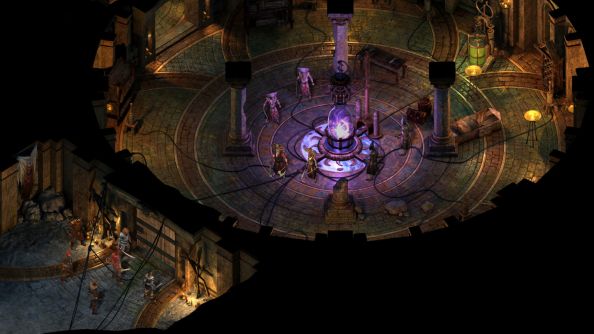
Obsidian are throwing you into the thick of the debate. “Defiance Bay is our first major city and it’s the centre of Animancy research in the world,” Sawyer says. “There are a lot of bad things that have come of it but good things have happened, too. It’s like a technology debate, like the ethics of technology and how it’s being built, and how it’s being monitored, or not monitored. Of course, there are parallels to real world stuff.”
This isn’t all a metaphysical debate that’s separate from the nuts and bolts of the action of the game. It bleeds into every layer of Pillars. The most creative example of this is one of the new classes, the chanter.
The chanter acts as Pillars’ primary summoner class. Like poets in our ancient history, they’ve “learned phrases that are kind of like ‘Swift Achilles blah blah blah’, iconic phrases from the literature of this world.” But, unlike our poets, “when they say it they’re calling out to the unconscious collective knowledge of all the dead people present in the world and all the dead people make the spell effects from them.
“There’s one like ‘And who else was buried under that hill none can say’ and it summons skeletons. Those phrases get linked together into chants, those chants are buffs, and as you say each phrase that gives a little, short-term buff, and it ends and drifts for a little while as another phrase starts. After you’ve said a certain number of phrases then you can use an invocation which is an powerful spell cast, like summoning ogres.”
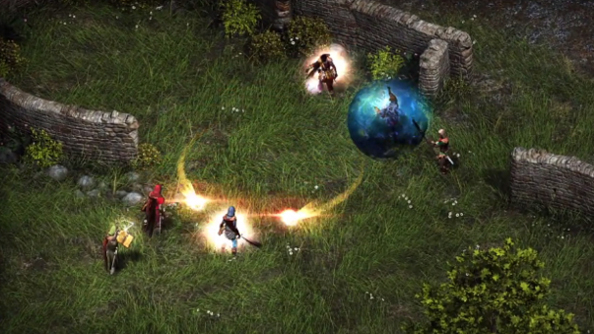
Chanters will play unlike any other character in your party. You’ll need to play them with a rhythm where they’re always moving onto the next chant and have that chant be informed by the previous one to build to a large invocation.
Naturally, Obsidian are also giving you the chance to dabble in this animancy business yourself. Depending on the character, some of your companions will lead you down quests where you can dissect and alter their souls, or the souls of people they know. Changing the demeanor, abilities, and perspective.
The world of Pillars is what’s got me most excited to sit down with the game proper but it’s only one of its standout elements. Obsidian have thrown out the traditional D&D ruleset in favour of creating their own and it’s a marvel of clarity.
When you’re creating your character you’re presented with a screen very similar to the old Infinity Engine games. You’re asked to pick a race and a class and then you’re given points to assign, buffing qualities like might and intellect. Unlike those old games, making an intellectual barbarian or an idiot wizard is now not only a viable option but it can be a sensible one.
In Pillars might replaces strength but it’s not explicitly muscle power, it’s power in general. So, for a barbarian it’s about how much damage they can do. For a priest it’s how much health their spells restore. Sawyer explained the changes with this example: “If you want to create an idiot muscle wizard you can do that you’re making a tradeoff but it’s an actual tradeoff not just a shitty character [they] will have more powerful spells, they’ll do more damage” but intellect dictates “duration of any abilities you use and area of effect.” Similarly, a brainy barbarian may not do much damage with their attacks but they’ll be much better at crowd control.
Combat numbers are clearer, too. It comes down to accuracy vs defense. When you attack your character’s accuracy, which is a number determined by your class, level, and dexterity, is played against an enemy’s defense rating. If it’s higher then you strike them, and, depending on how high that score is you either graze them, hit them, or crit them.
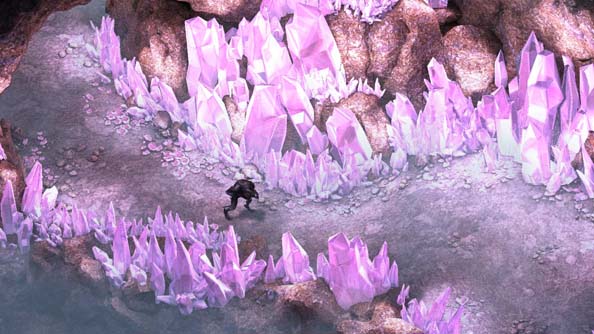
“Grazes, hits, and crits are consistent across all attacks,” Sawyer, who designed the system, tells me. “If it works for a fighter it works for a wizard. A hit is a standard damage and a standard duration. A graze is if it falls below a normal hit range. So, say you need a 50 to hit, below a 50, down to 5 is a graze and that does half damage or half duration of effect. Then, a certain distance above a hit is a crit and a crit is always 50% more damage or 50% more duration. It doesn’t matter what the attack is.” This consistency across the game makes Pillars’ numbers comprehensible.
Obsidian have cannily kept the dice rolls and numbers out of sight but always within reach. During combat a dialogue box in the bottom right tells you how much damage you’ve done, clicking on it will explode it out to show all the maths behind that hit, giving you the necessary data to change your tactics; your barbarian’s sword swipe might have been largely nullified by the ogre’s deflection defense but your wizard’s magic missile will do much better.
Obsidian also decided to do away with D&D’s obscure morality system. You won’t be stating at the beginning of the game that you’re chaotic neutral or lawful good in Pillars, instead you’ll develop a reputation based on your actions, both on the battlefield and in conversation. NPCs will respond to this persona, but not always as simply as you might expect.
“Say you have a reputation of being very aggressive,” Sawyer says. “In our design docs we say aggressive can mean bold, hot-headed, it can mean uncontrollable, it can mean all these things depending on how an individual will interpret it. Someone might say ‘I love how you take charge, you know how to get things done. You don’t take fucking shit from anybody.’ Other people are like ;You’re way too impetuous, you cause all sorts of shit. You needlessly provoke people.’ Diplomatic can be treated as ‘Oh, you’re awesome, you negotiate all these truces, you don’t have to resort to violence.’ Other people think you’re a huge pushover. It depends on the individual who talks to you not some grand cosmic wheel of morality.”
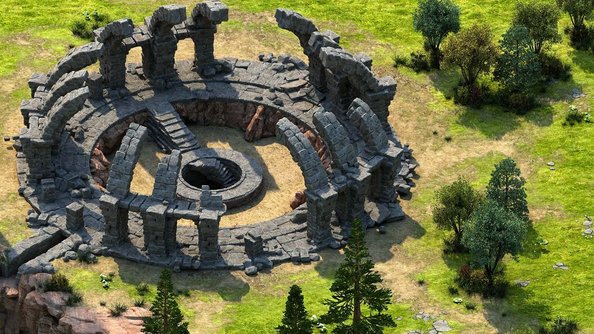
But aggressive and diplomatic sound dull compared to ‘cruel’. “it doesn’t come up often,” Sawyer tells me, “but it has a major impact on your reputation. People are like ‘You’re kind of a nasty fucker, aren’t you?’”
It brings transparency to your interactions in Pillars, and the effects of those interactions. You can gauge from the way a character talks whether they’ll respond well to an aggressive, forthright approach, or something more cushioned in kind words.
Clearly, Obsidian are going over every facet of the games they made back in the 1990s and early 2000s, deciding what can to excise, what to include, and what to improve. “We’re trying to capture the collective Infinity Engine experience,” Sawyer says proudly. “It’s little bits of Baldur’s Gate, little bits of Icewind Dale, and little bits of Planescape torment. This is supposed to be the dream game for people who like Infinity Engine games.”
With Wasteland 2, Divinity: Original Sin, and Pillars of Eternity all out this year, 2014 is becoming the best year for RPGs in over a decade.
